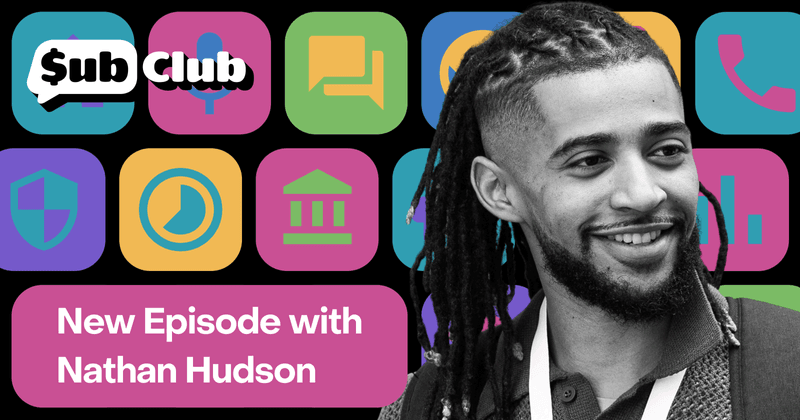“Web-to-app gives you the ability to control the user journey and funnel more effectively” — Nathan Hudson, Perceptycs
From the web to your app: Insights on the rising web-to-app trend

This week on the Sub Club podcast, we sat down with Nathan Hudson, Founder & CEO of Perceptics and this year’s App Marketer of the Year, to discuss the rapidly growing trend of web-to-app strategies. Nathan shared actionable insights on why web-to-app is becoming essential for app growth, the benefits of control and personalization, and how apps can reach new audiences by using the web effectively.
Understanding web-to-app strategies
Nathan kicked off the conversation by defining web-to-app as the process of converting users from the web to the app through intentional touchpoints like quizzes, blog posts, and webinars. He highlighted how this strategy isn’t just about onboarding journeys but creating tailored user experiences that bridge web traffic with app functionality. This allows apps to capture and nurture low-intent users before they even reach the app store.
One of the key benefits Nathan discussed is the ability to control every step of the user journey. Unlike the restrictive nature of app stores, web-to-app gives developers the freedom to experiment with custom landing pages, targeted content, and even alternative pricing models like money-back guarantees, ultimately leading to better conversion rates and more engaged users.
The cash flow advantage for smaller apps
A significant advantage of web-to-app is its impact on cash flow. Nathan emphasized how web-based purchases allow developers to receive funds faster than app store payouts, which is critical for early-stage apps looking to reinvest quickly. He noted that startups often face long payment delays through app stores, which can slow down iteration cycles and growth.
For smaller apps, the attribution tools available on the web can also be a game changer. Without the constraints of app store tracking, web-to-app enables clear insights into user behavior and campaign effectiveness, allowing developers to allocate budgets more efficiently and drive faster decision-making.
Expanding audience reach
Nathan revealed how web-to-app can opens up new demographics that app-focused strategies often overlook. Desktop users, older audiences, and users who avoid app downloads altogether can all be reached through creative web campaigns. He shared examples of successful apps that leverage blog posts, gated webinars, and long-form content to target these segments and build trust before introducing the app experience.
By capturing intent through the web, apps can retarget users who may not convert immediately. This opens the door to more nuanced marketing strategies, such as email nurturing, affiliate partnerships, and influencer collaborations—all made more effective through the data-rich nature of web funnels.
Conclusion
By embracing the web-to-app strategy, app developers can take greater control of their user journeys, expand their reach, and improve their bottom line. Listen to our full conversation with Nathan Hudson to learn how your app can benefit from this powerful approach to growth.
You might also like
- Blog post
Modeling attribution on iOS: what works, what doesn’t, and how to choose
How to navigate the messy world of SKAN, AEM, and probabilistic attribution — plus two practical frameworks to get a clearer picture of campaign performance.
- Blog post
Your sprints must pay for themselves: Dan Layfield’s product advice
What’s worth building? Dan Layfield shares a 3-bucket framework to help app teams prioritize features, fix churn, and ship faster.
- Blog post
Is monetization hurting your app’s user experience?
Don’t trade short-term revenue for long-term trust. How ethical UX can still drive effective monetization.

